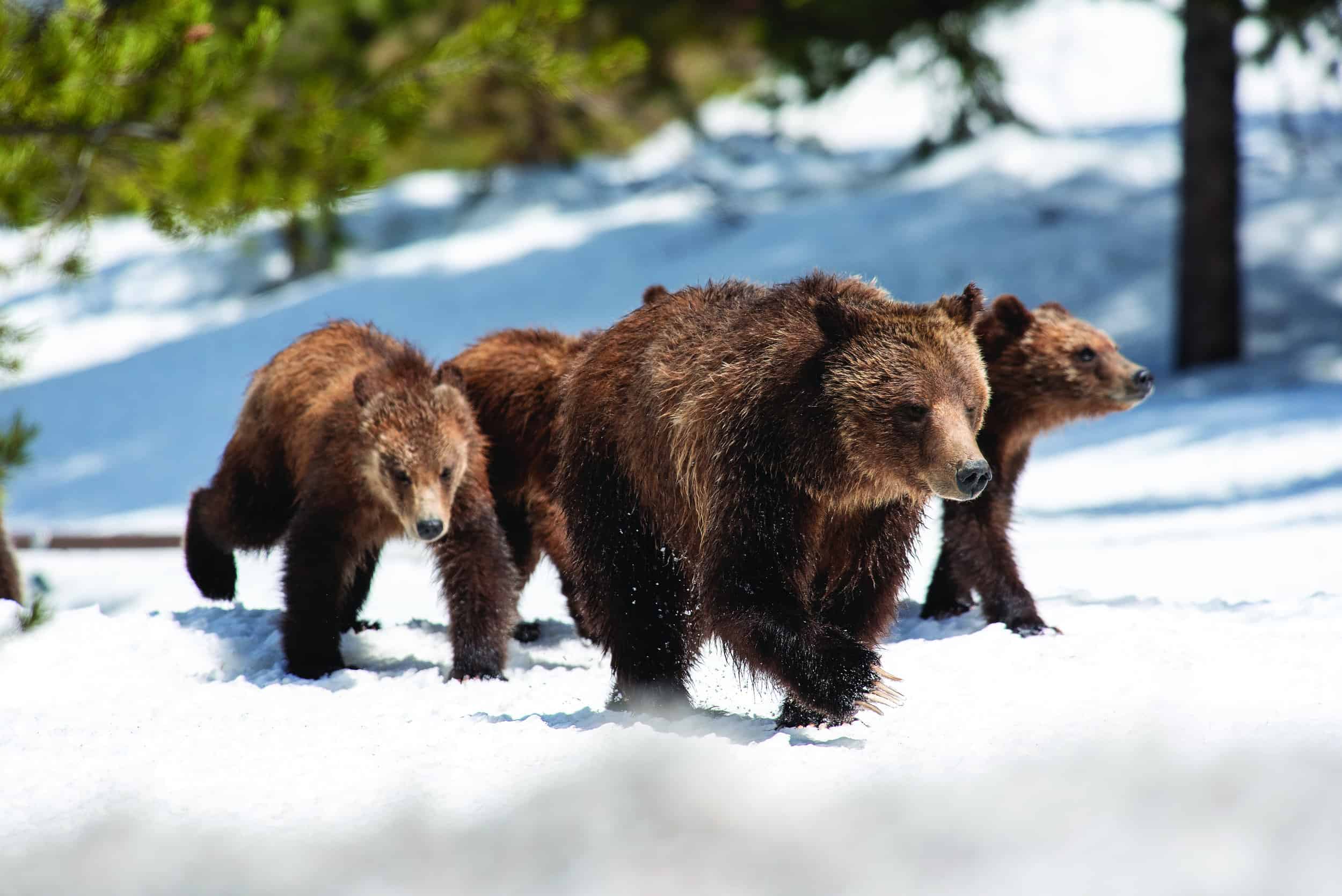Report on the Reintroduction of the California Red-Legged Frog and its Alignment with Sustainable Development Goals
Introduction: A Crisis in Biodiversity and the Mandate of SDG 15
The California red-legged frog (Rana draytonii), the largest native frog west of the Rocky Mountains, has faced a severe decline, resulting in its extirpation from over 70% of its historic range. This decline is a direct consequence of pressures that contravene the targets of Sustainable Development Goal 15 (Life on Land), which aims to halt biodiversity loss. Key drivers of the species’ decline include:
- Habitat destruction from agriculture and urban development.
- Introduction of invasive predators, notably the American bullfrog.
- Over-harvesting during the 19th century.
By 1996, the species was listed as threatened under the Endangered Species Act, with a 260-mile gap in its population between Los Angeles and northern Baja California. A multi-stakeholder initiative was formed to address this critical biodiversity gap by reintroducing the species to its native habitats in Southern California, directly aligning with SDG Target 15.5 to protect and prevent the extinction of threatened species.
Project Methodology: A Framework of Partnership and Innovation
International Collaboration: A Model for SDG 17
The success of the reintroduction project is a testament to the power of multi-stakeholder collaboration, a core principle of SDG 17 (Partnerships for the Goals). The initiative required complex coordination across an international border, involving government agencies, non-profit organizations, and scientific institutions. Key partners included:
- The U.S. Fish and Wildlife Service
- The U.S. Geological Survey
- The Nature Conservancy
- Fauna del Noroeste (a Mexican non-profit)
- The San Diego Natural History Museum
This partnership facilitated the necessary genetic analysis, habitat restoration, and cross-border logistical operations essential for the project’s execution.
Translocation and Habitat Restoration
The reintroduction process involved a systematic, multi-year effort to restore a self-sustaining population. This process contributes to SDG 15 (Life on Land) and SDG 14 (Life Below Water) by actively restoring degraded freshwater ecosystems.
- Source Identification: Genetic testing confirmed that remnant frog populations in Mexico’s Baja Peninsula were the most suitable source for reintroduction into Southern California.
- Habitat Preparation: Two sites in San Diego and Riverside counties were identified. These freshwater habitats were cleared of invasive, predatory bullfrogs to ensure the viability of the reintroduced species.
- Translocation: Beginning in 2020, a total of 87 frog egg masses were carefully harvested in Baja California and transported via a coordinated effort involving helicopters and vehicles to the prepared sites in Southern California.
Monitoring and Results: Leveraging Technology for SDG 9
Applying Artificial Intelligence for Conservation
A significant challenge in verifying the project’s success was monitoring the nocturnal breeding activity of the frogs over vast areas. To overcome this, the project team implemented an innovative technological solution, reflecting the principles of SDG 9 (Industry, Innovation, and Infrastructure).
- Acoustic sensors were deployed at the relocation sites to record thousands of hours of audio data from dusk to dawn during the mating season.
- A custom-trained Artificial Intelligence (AI) model was developed to analyze the audio recordings, specifically to detect the distinct mating calls of the California red-legged frog and its competitor, the American bullfrog.
- This machine learning model drastically reduced the human labor required for monitoring and provided a systematic, efficient method for tracking the species.
Confirmation of a Self-Sustaining Population
After five years of translocation efforts, the AI-powered monitoring system yielded a definitive result. In early 2024, the model identified the mating calls of male California red-legged frogs. This was the first time the frog’s call had been officially recorded in the wilds of San Diego County in 25 years. Subsequent field surveys confirmed the presence of a newly laid egg mass near the location of the recorded calls.
This outcome provides the first concrete evidence that the translocated frogs have reached sexual maturity and are successfully breeding, establishing a self-sustaining population and marking a major milestone for the project.
Conclusion: A Successful Model for Ecosystem Restoration
The reintroduction of the California red-legged frog into Southern California is a significant conservation victory. The project’s success provides a powerful model for future species recovery programs and demonstrates a profound commitment to the Sustainable Development Goals.
- SDG 15 (Life on Land): The project directly reverses biodiversity loss by re-establishing a threatened species in its native habitat, contributing to the restoration and resilience of the local ecosystem.
- SDG 17 (Partnerships for the Goals): The international, cross-sector collaboration was fundamental to overcoming logistical and political hurdles, proving that complex environmental challenges can be solved through effective partnerships.
- SDG 9 (Industry, Innovation, and Infrastructure): The application of AI for acoustic monitoring represents a major advancement in conservation technology, making biodiversity tracking more efficient and scalable.
- SDG 11 (Sustainable Cities and Communities): By restoring a piece of the region’s natural heritage, the project enhances the ecological integrity of areas impacted by human development.
The return of the California red-legged frog’s call to the streams of Southern California is a tangible result of a concerted effort that integrates science, technology, and partnership to achieve critical global sustainability targets.
Analysis of Sustainable Development Goals in the Article
1. Which SDGs are addressed or connected to the issues highlighted in the article?
The article on the reintroduction of the California red-legged frog addresses several Sustainable Development Goals (SDGs) through its focus on biodiversity conservation, international cooperation, and the use of innovative technology.
- SDG 15: Life on Land: This is the most prominent SDG in the article. The entire project is centered on protecting a threatened species, restoring its habitat, and managing invasive species. The article details efforts to “protect and prevent the extinction of threatened species” by reintroducing the California red-legged frog to its historic range after it had been “pushed out of the state decades earlier.”
- SDG 17: Partnerships for the Goals: The success of the project is explicitly attributed to a complex partnership. The article states the efforts were “monumental — involving private landowners, federal agencies, conservation groups, helicopters and an international border.” This highlights a multi-stakeholder and cross-border collaboration essential for achieving conservation goals.
- SDG 9: Industry, Innovation, and Infrastructure: The article emphasizes the crucial role of technology and scientific innovation in conservation. It describes how “new technologies like AI are helping muddy-boot biologists and wildlife conservationists” and details the creation of a “customized AI model” to overcome the challenges of monitoring the frogs, thus enhancing scientific research capabilities.
2. What specific targets under those SDGs can be identified based on the article’s content?
Several specific targets can be directly linked to the actions described in the article.
-
Under SDG 15 (Life on Land):
- Target 15.5: “Take urgent and significant action to reduce the degradation of natural habitats, halt the loss of biodiversity and, by 2020, protect and prevent the extinction of threatened species.” The project is a direct response to this target. The California red-legged frog was “listed as threatened” and occupied “less than 70% of its historic range.” The reintroduction effort is a significant action to halt this biodiversity loss and prevent the species’ local extinction in Southern California.
- Target 15.8: “By 2020, introduce measures to prevent the introduction and significantly reduce the impact of invasive alien species on land and water ecosystems and control or eradicate the priority species.” The article explicitly mentions that the American bullfrog is an “invasive, predatory” species that contributed to the red-legged frog’s decline. A key step in the project was ensuring the new habitats were “cleared of invasive, predatory bullfrogs.”
-
Under SDG 17 (Partnerships for the Goals):
- Target 17.16: “Enhance the Global Partnership for Sustainable Development, complemented by multi-stakeholder partnerships that mobilize and share knowledge, expertise, technology and financial resources…” The project is a model of this target, described as a collaboration between “private landowners, federal agencies, conservation groups” like The Nature Conservancy, and non-profits such as Mexico’s Fauna del Noroeste. This partnership mobilized resources and expertise across an international border.
-
Under SDG 9 (Industry, Innovation, and Infrastructure):
- Target 9.5: “Enhance scientific research, upgrade the technological capabilities of industrial sectors in all countries…and encourage innovation”. The article showcases this by describing how the team partnered with engineers to create a “custom machine learning model” to analyze thousands of hours of audio. This upgraded the technological capability of the conservation team, making monitoring more efficient and effective than traditional methods.
3. Are there any indicators mentioned or implied in the article that can be used to measure progress towards the identified targets?
Yes, the article contains several explicit and implicit indicators that can be used to measure progress.
-
Indicators for Target 15.5 (Protecting Threatened Species):
- Number of translocated egg masses: The article states that “87 more moved egg masses” were part of the project, a direct measure of the scale of the conservation action.
- Evidence of successful breeding: The ultimate success is self-sustainability. The discovery of a “new egg mass” following the detection of mating calls is a key indicator that the reintroduced population is breeding.
- Species population monitoring: The use of AI to detect “the sound of mature male frogs calling” serves as an indicator of the presence and activity of a viable adult population.
-
Indicators for Target 15.8 (Controlling Invasive Species):
- Absence/Presence of invasive species: The AI model was trained to detect not only the red-legged frog but also its competitor, the “non-native American Bullfrog.” The data from the AI provides a systematic monitoring indicator for the presence of this invasive species.
-
Indicators for Target 17.16 (Partnerships):
- Number and diversity of partners: The article lists the partners involved: “private landowners, federal agencies (U.S. Geological Survey, U.S. Fish and Wildlife Service), conservation groups (The Nature Conservancy), [and a] nonprofit (Fauna del Noroeste),” which serves as an indicator of a successful multi-stakeholder partnership.
-
Indicators for Target 9.5 (Innovation):
- Development and application of new technology: The creation and successful deployment of the “customized AI model” is a direct indicator of innovation being applied to solve a scientific challenge.
- Increased efficiency in research: A biologist notes that traditional monitoring is “not the most efficient use of time.” The AI provides “systematic monitoring,” indicating a significant improvement in research efficiency.
4. Summary Table of SDGs, Targets, and Indicators
| SDGs | Targets | Indicators |
|---|---|---|
| SDG 15: Life on Land |
15.5: Halt biodiversity loss and protect threatened species.
15.8: Control or eradicate invasive alien species. |
– Number of translocated egg masses (87). – Confirmation of successful breeding (new egg mass found). – Detection of mature male frog calls via AI monitoring. – Systematic AI monitoring for the presence of the invasive American Bullfrog. |
| SDG 17: Partnerships for the Goals | 17.16: Enhance multi-stakeholder partnerships for sustainable development. | – Existence of a cross-border partnership involving federal agencies, non-profits (Fauna del Noroeste, The Nature Conservancy), and private landowners. |
| SDG 9: Industry, Innovation, and Infrastructure | 9.5: Enhance scientific research and encourage innovation. |
– Development and deployment of a “customized AI model” for audio analysis. – Increased efficiency of species monitoring compared to traditional methods. |
Source: laist.com







